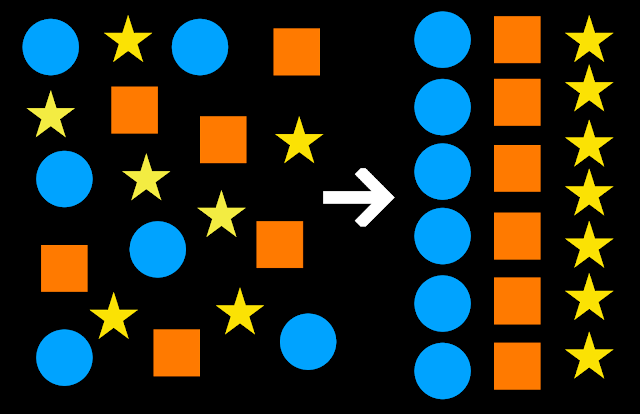DEEP LEARNING REVOLUTION: Unveiling the Potential of CONVOLUTIONAL NEURAL NETWORKS (CNNs) in Brain Tumor Detecti
“From Basics to Advanced Techniques: A Comprehensive Guide and Case Study in Medical Image Analysis"
INTRODUCTION:
Welcome, curious minds, to a captivating journey that intertwines medicine, technology, and the fascinating realm of artificial intelligence. Today, we embark on an exploration of Convolutional Neural Networks (CNNs) and their extraordinary potential in the early detection of brain tumors. Join us as we traverse the realms of deep learning, unveiling the power of CNNs in deciphering the enigmatic world of brain tumors. Prepare to be amazed, entertained, and enlightened as we explore this fascinating intersection of science and AI!
GIF SOURCE: https://giphy.com/
DECODING THE BRAIN: UNRAVELING THE ENIGMA OF BRAIN TUMORS:
Welcome to the enthralling realm of brain tumors, where medical wonders and technological advances collide. This part takes us on an expedition to unravel the mystery of brain tumors, their causes, and the problems they represent to healthcare practitioners.
Brain tumors, both malignant and benign, impair the brain's delicate workings, frequently with disastrous results. The necessity for early diagnosis and intervention, which can dramatically improve patient outcomes, drives the pressure to create better diagnostic technologies.
We look at some of the most common forms of brain tumors to provide light on the complex terrain of brain tumors. Glioma is a form of malignant tumor that originates in the brain's glial cells. Its aggressive nature demands a quick and accurate diagnosis. Meningioma is another prominent variety. It is a largely benign tumor that forms in the meninges, the protective membranes that surround the brain. While most meningiomas are not malignant, they can nonetheless pose major health hazards and need medical intervention.
Speaking further on the same issue, Healthcare workers confront the issue of analyzing enormous volumes of medical data connected to brain tumors, just as an overburdened computer may feel a "headache" from processing too many algorithms. Convolutional Neural Networks (CNNs) come to the rescue here, allowing computers to detect and classify brain tumors with astonishing precision.
We used a large dataset of brain MRI (Magnetic Resonance Imaging) images to train and test our CNN model. This dataset includes hundreds of images depicting various forms of brain tumors, such as glioma, meningioma, and others. By putting these images into our CNN, we enabled it to understand the subtle patterns and traits that distinguish various tumor kinds, allowing for a more accurate diagnosis.
UNDERSTANDING THE CONVOLUTIONAL NEURAL NETWORKS:
Welcome to the thrilling world of Convolutional Neural Networks (CNNs), the computer vision superheroes! These cutting-edge algorithms are the Sherlock Holmes of picture analysis, pulling mind-boggling insights from pixels and revealing the secrets buried inside. So, take your virtual magnifying glass and join us as we explore the fascinating world of CNNs!
Picture this: CNNs are the cool kids at artificial intelligence schools. They, like our brains, are designed to process and comprehend visual information. These neural networks have been trained to recognize forms, patterns, and objects, making them the perfect digital detectives.
CONVOLUTIONAL LAYERS:
Convolutional layers are the secret sauce underlying CNNs' amazing abilities. They use a clever technique called "convolution," in which they slide small filters across the image, looking for crucial visual elements. It's as if a team of microscopic detectives is scouring through every nook and cranny, identifying edges, textures, and intriguing features.
SOURCE: https://www.researchgate.net/figure/Schematic-diagram-of-a-basic-convolutional-neural-network-CNN-architecture-26_fig1_336805909
POOLING LAYER and DOWNSAMPLING APPROACH:
But hold on, there's more! CNNs understand how to capitalize on their discoveries. They transfer these notable characteristics across pooling layers after extracting them. Consider pooling layers to be a DJ remixing a hit song; it picks the most exciting patterns and blends them together to create a shortened version that keeps all of the excitement. This downsampling approach allows CNNs to focus on the most important features of a picture while decreasing noise.
FULLY CONNECTED LAYERS:
Now, it's showtime! Fully connected layers step onto the stage, playing the role of the master storytellers. They analyze the abstract concepts derived from the previous layers, weaving them into a compelling narrative that leads to accurate predictions. With the help of activation functions like ReLU, these layers unleash their superpowers, capturing complex relationships and adding the right amount of zest to the storyline.
WHAT ARE THESE ACTIVATION FUNCTIONS? RIGHT, LET’S UNDERSTAND THAT:
Activation functions in Convolutional Neural Networks (CNNs) play a crucial role in determining the output of a neuron. They act as the decision-making process for each neuron, determining whether the neuron should be activated or not based on the input it receives.
Think of an activation function as the personalities of the neurons. Each neuron has its own way of responding to input signals, just like people react differently to different situations. These functions introduce non-linearity into the network, allowing the model to learn complex patterns and make accurate predictions.
Why do we use activation functions in CNNs? Well, to understand it more properly let's relate it with our brain. In our brains, individual neurons fire and transmit signals based on the information they receive. Similarly, in CNNs, activation functions mimic this behavior by introducing non-linearities and enabling the network to learn and make decisions based on the input data.
Let's talk about some popular activation functions and their unique characteristics:
Choosing the right activation function depends on the task at hand and the characteristics of the data. ReLU is often the default choice for hidden layers in CNNs due to its simplicity and effectiveness. However, it's essential to experiment with different activation functions to find the one that yields the best results for a specific problem.
So, activation functions in CNNs not only add some flavor and uniqueness to the neurons but also enables the network to learn and make accurate predictions. They are the secret ingredient that brings brain-inspired decision-making power to the world of artificial intelligence and helps in detecting brain tumors with the highest possible accuracy.
4. WEIGHT DISTRIBUTION:
But what about weight distribution? It's almost like there's a hidden language among the network's levels. CNNs avoid being tricked by an object's location in an image by sharing weights. They're like excellent spies with an uncanny ability to recognize patterns no matter where they appear. CNNs are so strong and accurate because of their ability to detect the same patterns everywhere.
CNNs become skilled detectives through training. They strengthen their investigation abilities using massive databases and strong optimization techniques. Backpropagation steps in to assist them, directing them to change their internal settings depending on the discrepancy between their forecasts and the actual fact. It's like a training montage from a superhero film, where they learn from their mistakes and get wiser and more accurate with each repetition.
So, what's the verdict? CNNs are like our personal Sherlock Holmes, uncovering the visual codes embedded in images, and understanding the world in a way only humans once could. These unique algorithms revolutionize computer vision, allowing machines to see, perceive, and interact with our visual universe.
CONCLUDING:
In conclusion, Convolutional Neural Networks (CNNs) are transforming medical diagnosis, particularly in the detection of brain tumors. With their exceptional ability to analyze brain MRI images, CNNs have become proficient in identifying tumors with unprecedented accuracy.
Equipped with convolutional layers, pooling layers, and fully connected layers, these advanced algorithms excel at extracting meaningful patterns from scans, aiding healthcare professionals in making precise diagnoses. Activation functions add decision-making capabilities to individual neurons, enabling the network to learn complex patterns and enhance accuracy.
Excitingly, I have also developed a custom CNN model for brain tumor detection and you can access the code on Github Gist or Kaggle, I’ll share the links for both at the end. We encourage you to join our community and share your ideas on the same and would love you have you guys on board with us. ❤️
If you have any questions or doubts bothering you, we wholeheartedly urge you to connect with us. Feel free to reach out via email or direct message on your favorite social media platform. We are here to assist you and foster a collaborative environment in this dynamic field.
Together, harnessing the power of CNNs and our collective expertise, we can continue to push the boundaries of early detection, enhance patient outcomes, and proper medical innovation to new heights.
May this be the beginning of an extraordinary voyage, where the convergence of medicine, technology, and AI reshapes the landscape of healthcare for the better.
GITHUB GIST :
KAGGLE:https://www.kaggle.com/code/vidhikishorwaghela/brain-tumor-detection-96-accuracy
FOLLOW US FOR THE SAME FUN TO LEARN DATA SCIENCE BLOGS AND ARTICLES: 💙
MAIL-ID: vidhiwaghela60@gmail.com
LINKEDIN: https://www.linkedin.com/company/dsmcs/
INSTAGRAM: https://www.instagram.com/datasciencemeetscybersecurity/?hl=en
GITHUB: https://github.com/Vidhi1290
TWITTER: https://twitter.com/VidhiWaghela
MEDIUM: https://medium.com/@datasciencemeetscybersecurity-
WEBSITE: https://www.datasciencemeetscybersecurity.com/
-- TEAM DATA SCIENCE MEETS CYBER SECURITY ❤️💙




Comments
Post a Comment